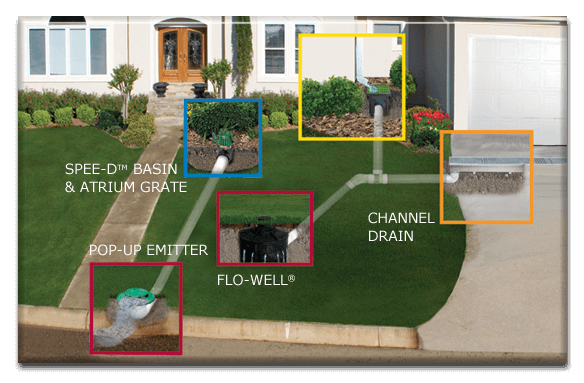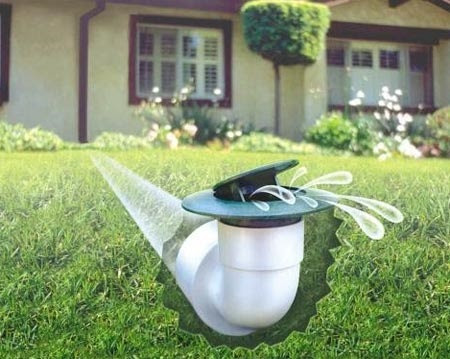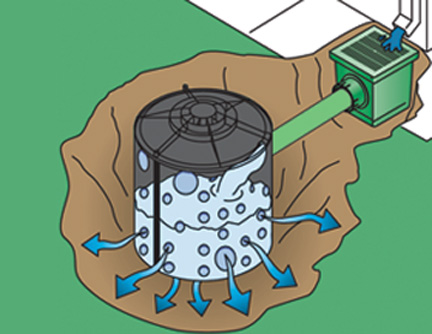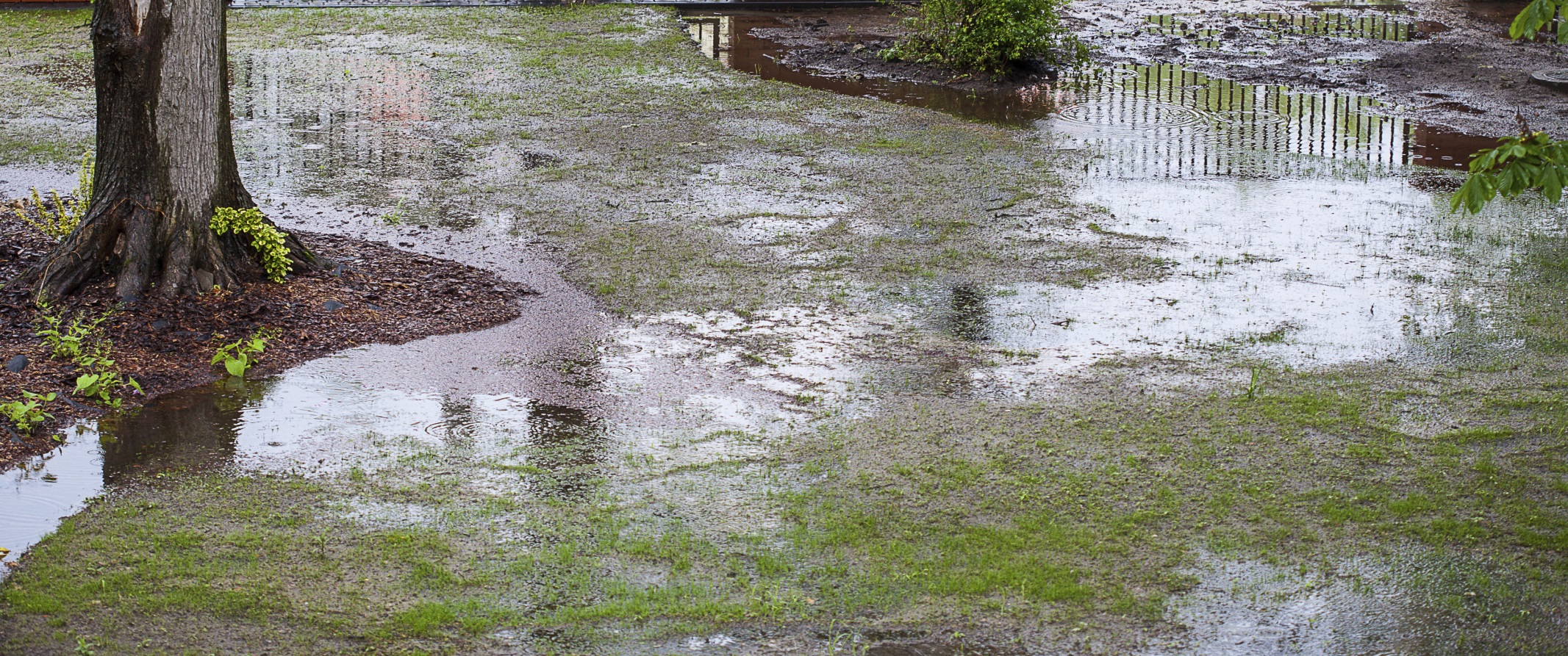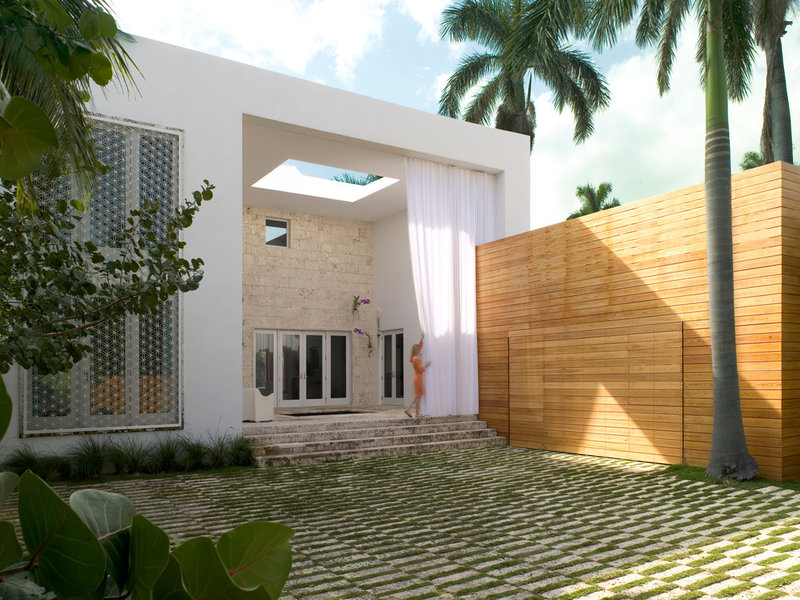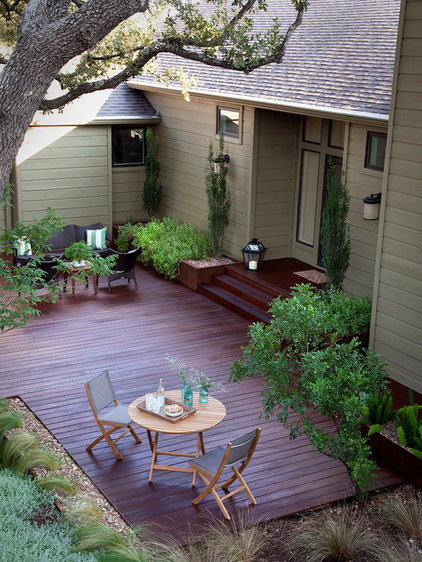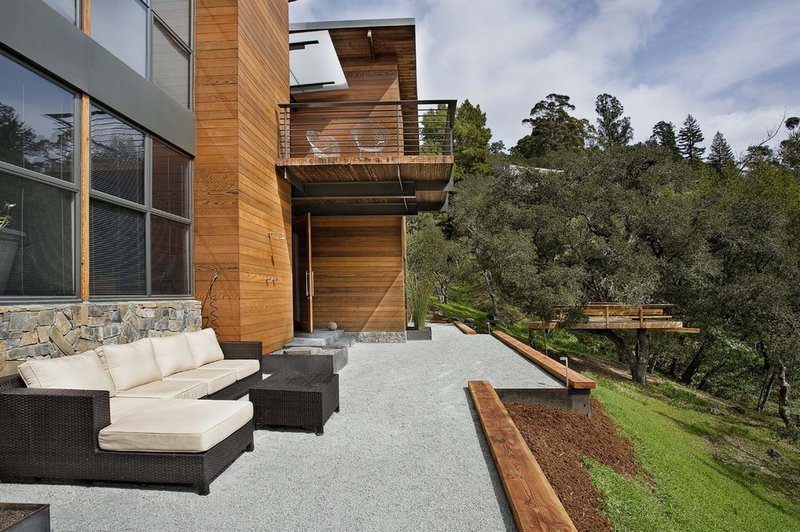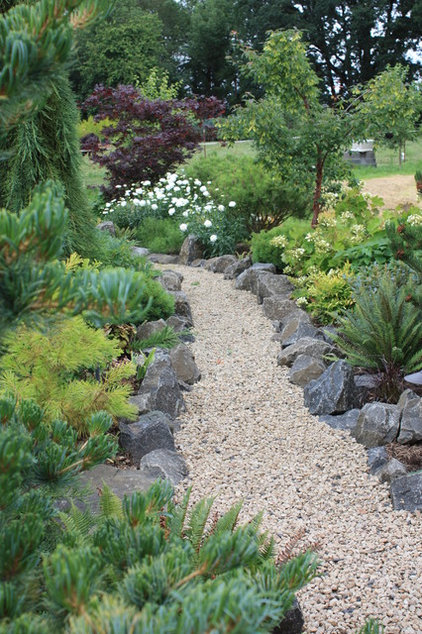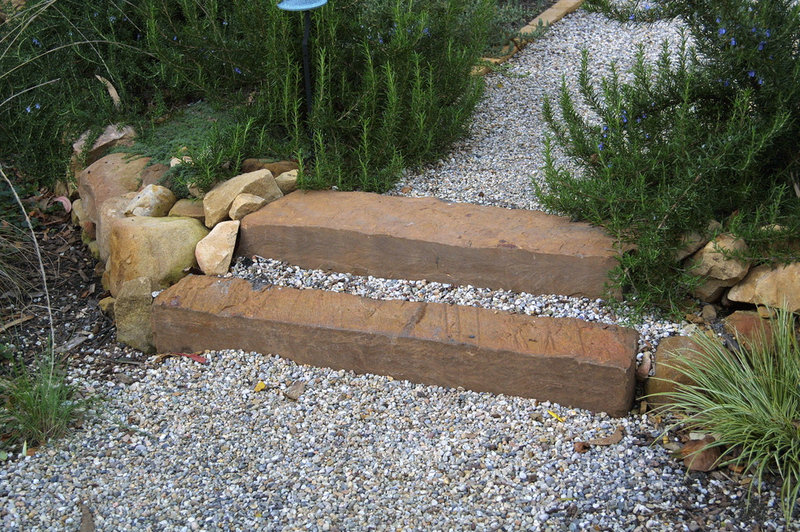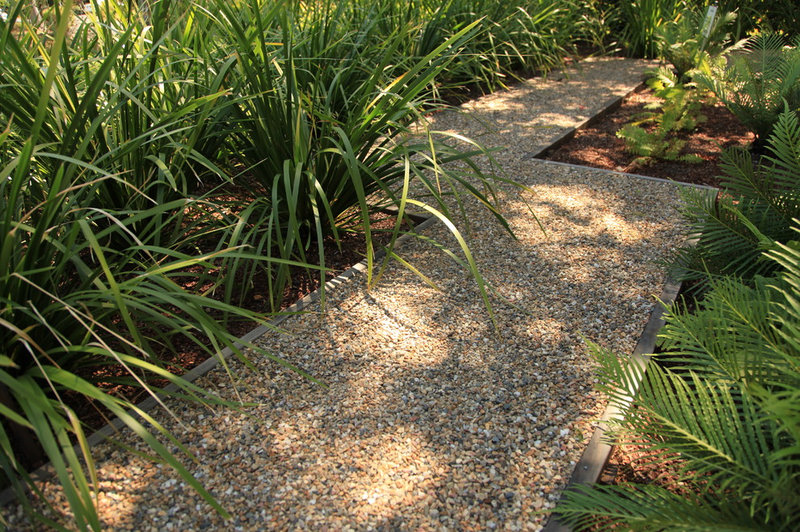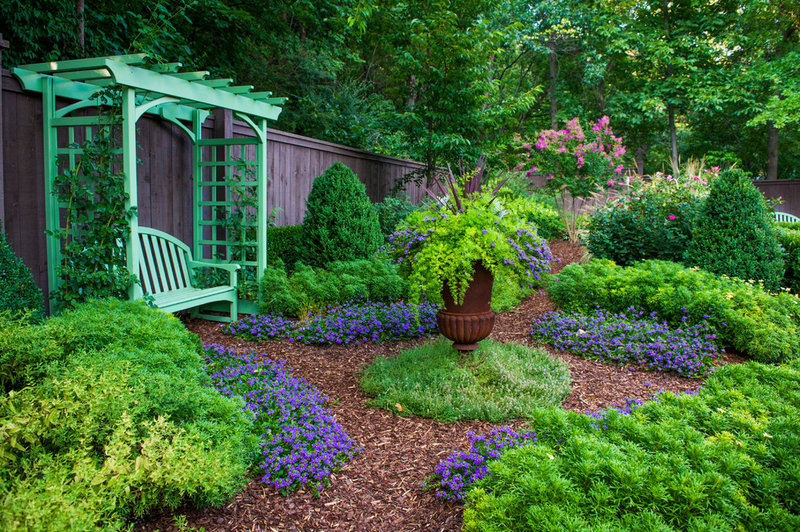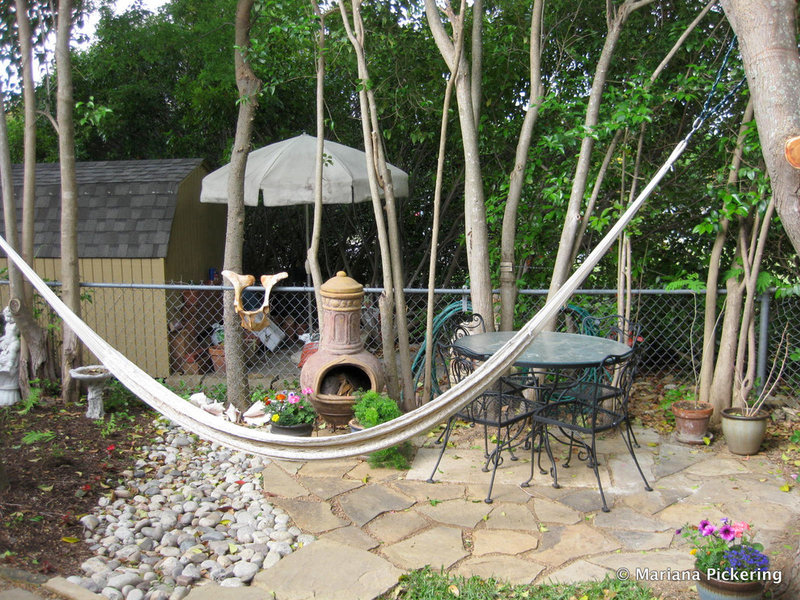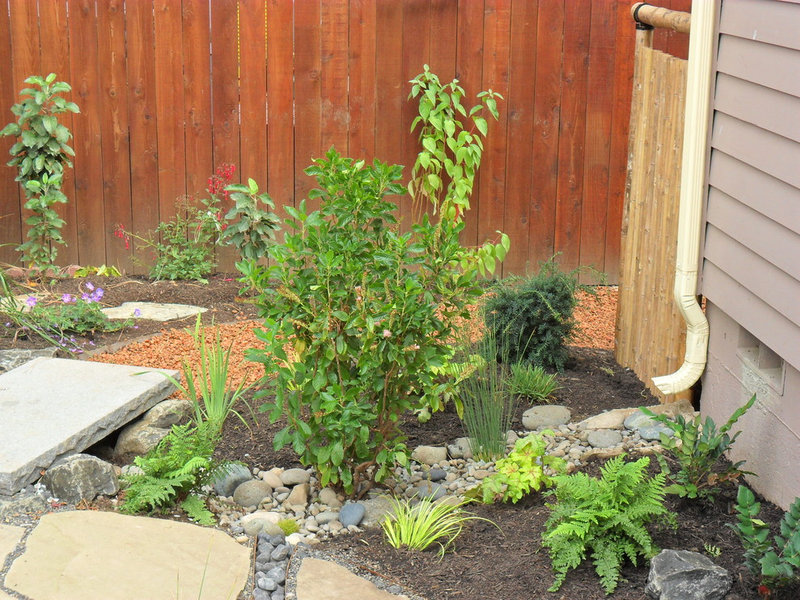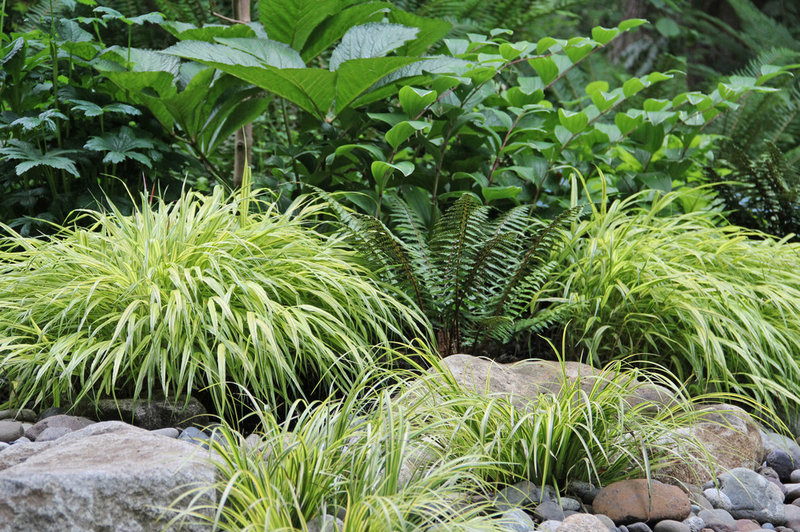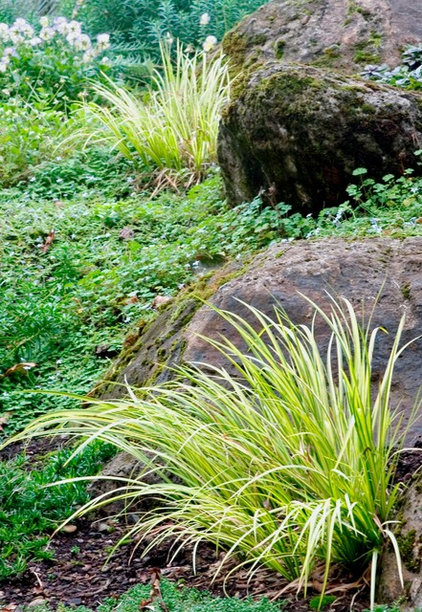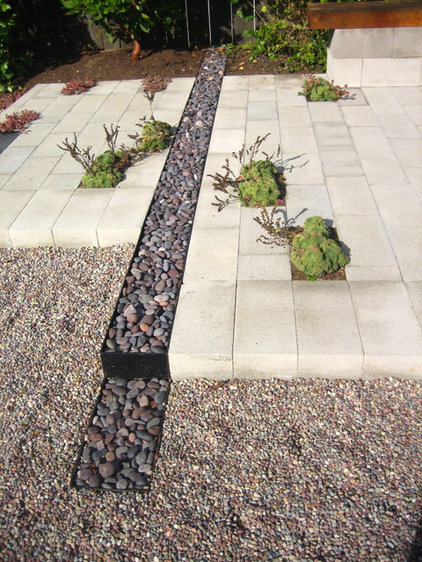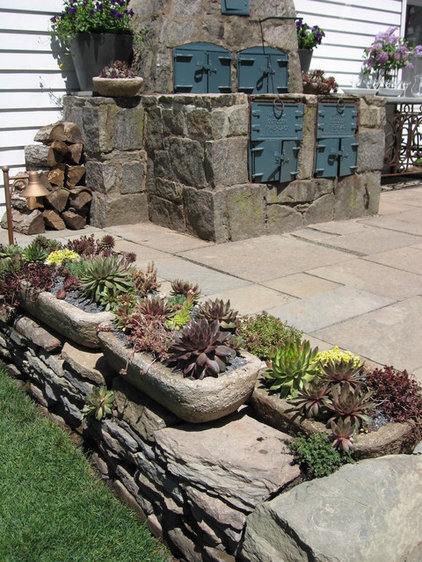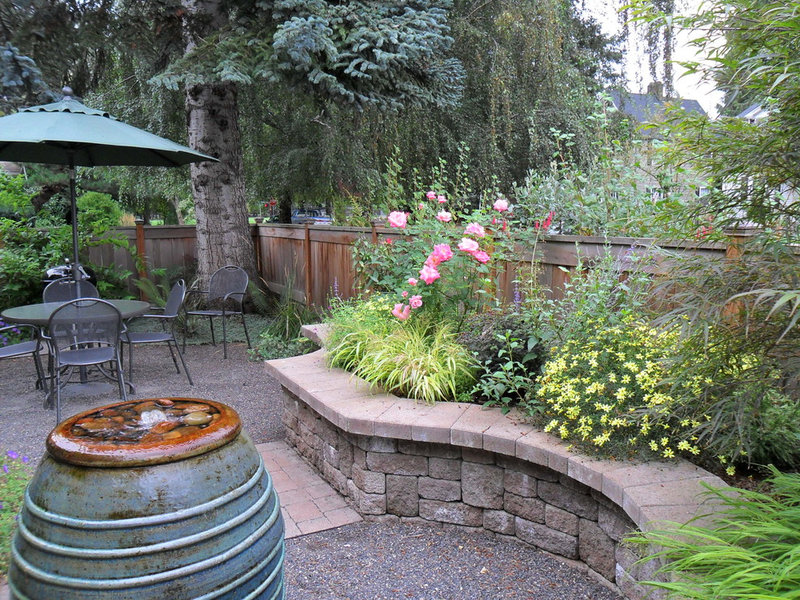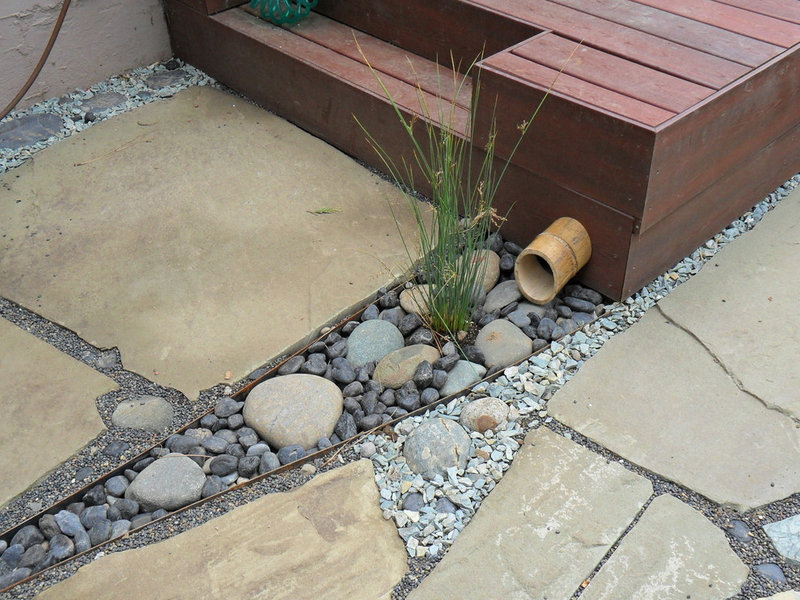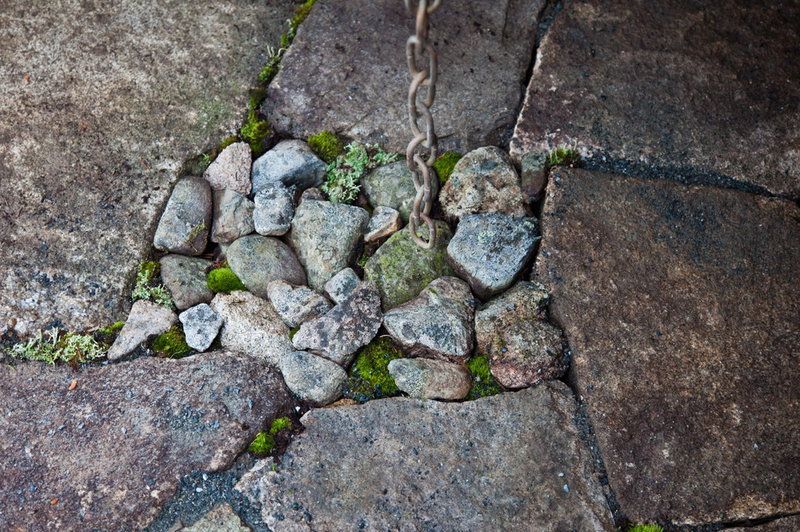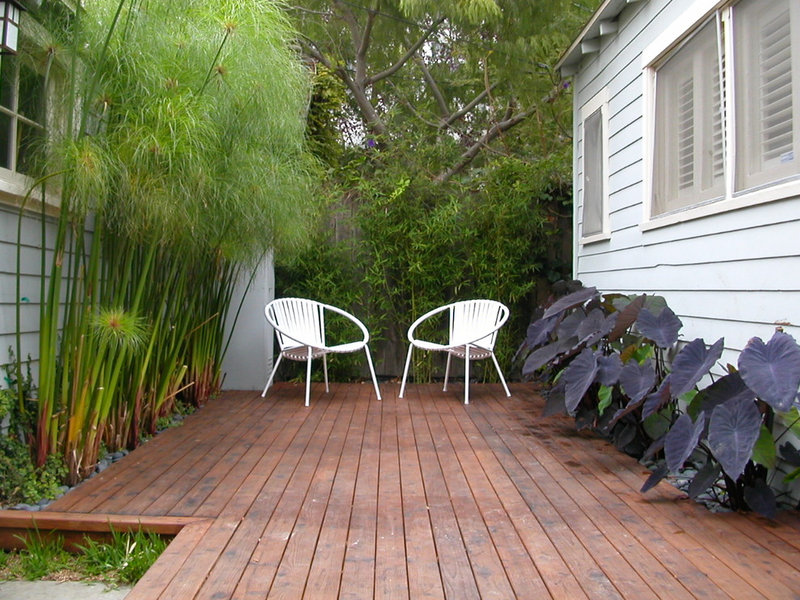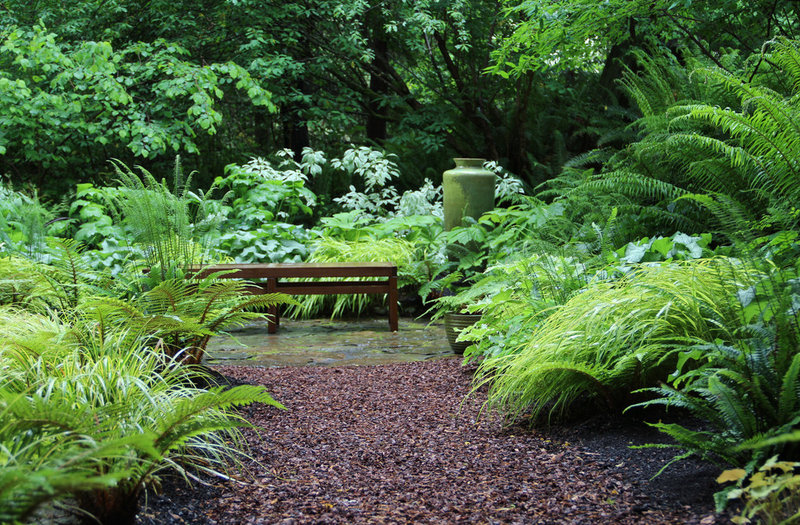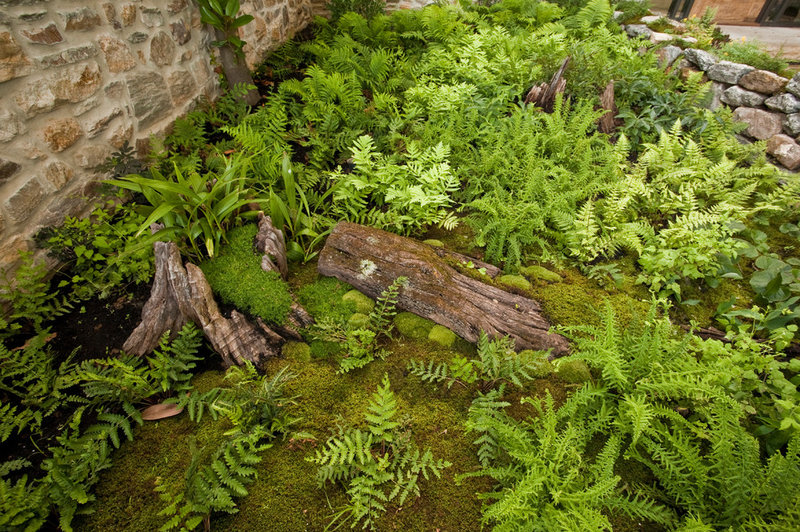You don’t have to be a geophysicist to know that washed out mulch or a lake on the front lawn are signs of Gainesville drainage concerns, but here are some tips on how to recognize and resolve some of Gainesville's most common drainage problems. Solving drainage concerns when they’re smaller and easier to fix can save you thousands of dollars and future headaches, so be on the lookout these issues.

Tip #1: Downspouts That Dump
Each inch of rain that falls on 1,000 square feet of a roof produces 600 gallons of runoff—enough to fill 10 bathtubs. Dumping that much water too close to the foundation should cause concern anywhere, but especially in Gainesville - an area known for settling and foundation shifting.
Some people add plastic gutter extensions to carry the water about 5 feet away from the house, which is better than right at the foundation. This is a temporary solution though, as they will fall off and aren't made very well. The better option is to install an underground gutter extension, carrying the water away from the foundation and dispersing it out into a safe area farther away from the home. (see a photo for example)
Tip #2: Overflowing Gutters

A mini waterfall over the edge of your gutter means something is causing them to back up and overflow. But you don’t need a live gusher to tell you you’ve got problems: Vertical streaks of dirt on the outside of gutters, mud spattered on siding, or paint peeling off the house in vertical strips are other sure signs. If you don’t take action, overflowing gutters can rot siding, ruin paint jobs, or in major cases cause structural damage.
If leaves are clogging the gutters or downspout, they just need to be cleaned out, which can be a DIY chore, or we can handle it for you. However, if your gutters are undersized or pitched incorrectly, we recommend calling a local gutter contractor.
Tip #3: Migrating Mulch
When soil doesn’t drain properly, rain runs off in sheets causing erosion in the landscape, dumping dirt on pathways, and carrying piles of mulch where they don’t belong. This can be caused by having a slope to your landscape or improperly managed runoff water.
These issues are usually resolved in several differing ways depending upon the layout of your landscape. Sometimes, creating a drainage system such as a french drain or dry well solve the concern. Other times, a simple berm or swale to redirect the water flow is the answer. These are all solutions that we at TMLC are glad to assist you with should you need our help.
If you have any questions regarding Gainesville drainage systems, please don’t hesitate to contact us at 352-378-5296 or info@themasterslawncare.com. I’d be happy to answer any of your questions or install a drainage solution for you. Below are just a few of the solutions we use in landscape drainage.
